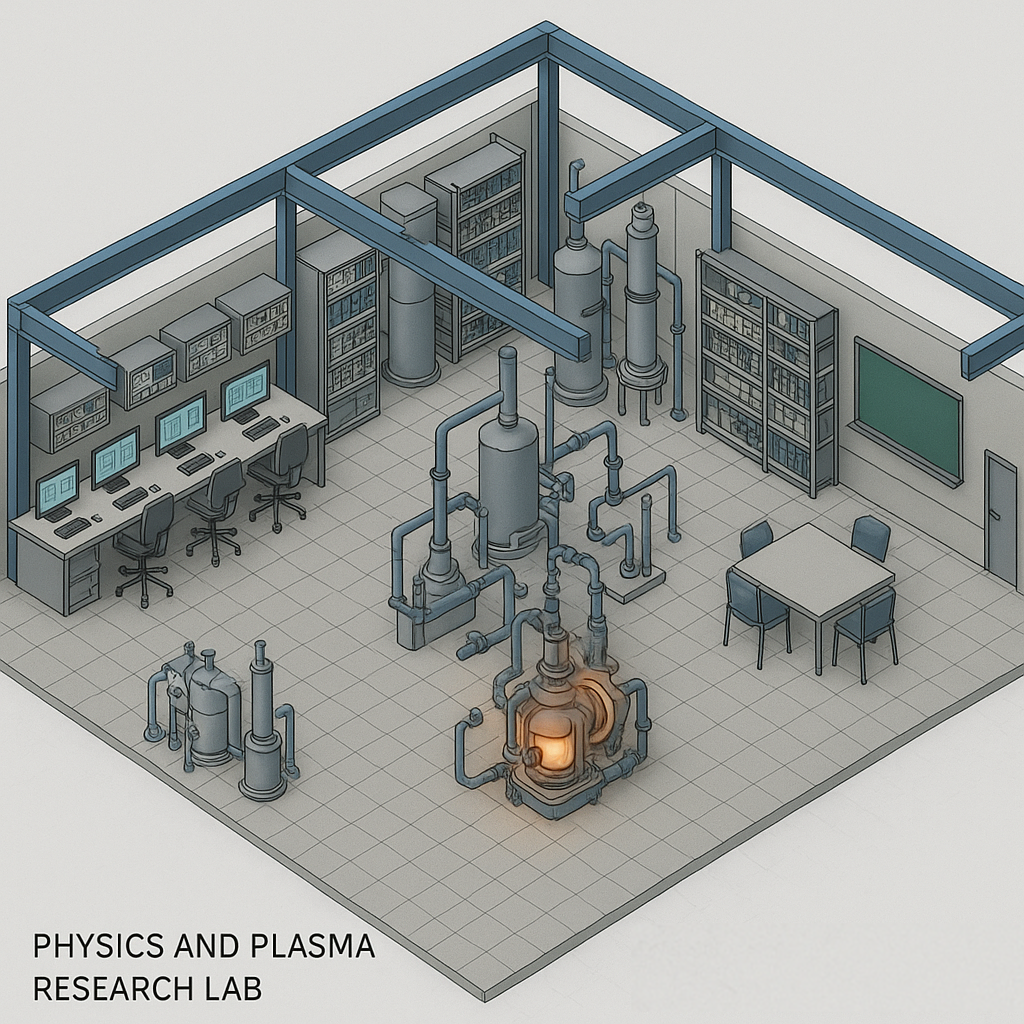The SPHERELAB project (Space, Plasma, High-energy Electrostatics Research & Engineering Laboratory) is a visionary initiative proposed by ARES Institute, Inc. to create a world-class facility dedicated to advancing applied plasma physics and fusion energy research. The lab’s mission is to bridge the gap between university-level fundamental research and commercial applications in high-energy plasma and fusion technologies. By leveraging Illinois’s historic leadership in nuclear sciences and collaborating closely with the University of Illinois and industry partners, SPHERELAB aims to become a Center of Excellence for plasma technology innovation.
A core objective of SPHERELAB is workforce development, which it addresses by creating hands-on research and educational opportunities for students and professionals in physics, electrical engineering, aerospace, and materials science. The lab intends to support graduate and doctoral research, develop a core curriculum in plasma technology, and establish fellowships to attract diverse talent. By offering students exposure to cutting-edge research infrastructure—including IEC fusion devices and proprietary plasma diagnostics—it will produce highly skilled graduates prepared to enter both the private sector and public research institutions. This approach is particularly vital given the aerospace industry’s urgent need to replenish and grow its engineering workforce.

SPHERELAB’s research activities will focus on a diverse array of high-risk, high-reward plasma applications. These include developing next-generation radiofrequency antennas and stealth plasma technologies for aerospace communications, advanced laser and maser systems for industrial and defense purposes, and exploring the potential of IEC fusion for clean energy generation and deep space propulsion. Its work in mineral refining and waste remediation promises breakthroughs in sustainable industrial practices, including aluminum reduction and carbon capture. Moreover, SPHERELAB will investigate photokinetic plasma propulsion and other unconventional concepts to broaden the frontiers of space exploration.
The laboratory’s potential impact on industrial innovation extends beyond academic research. By fostering public-private partnerships, SPHERELAB aims to serve as a consulting and R&D hub for companies seeking plasma-based solutions. Early-stage and growth companies in sectors like alternative energy, semiconductor manufacturing, and aerospace engineering are expected to become clients of the lab, thereby reinforcing the commercialization of plasma research and supporting regional economic growth.
From a technological standpoint, SPHERELAB will house a suite of unique experimental platforms, including modern versions of the Farnsworth Fusor and the Plasmak, as well as a Quantum Hydromagnetic Induction Assay Spectrometer for photochemical combustion studies. These devices will enable groundbreaking experiments in aneutronic fusion, plasma-material interactions, and advanced propulsion systems. Plans to demonstrate an IEC fusion thruster in low Earth orbit within three years highlight SPHERELAB’s commitment to translational research with tangible, near-term outcomes.
Workforce outreach is another critical pillar of SPHERELAB’s mission. The lab will engage in community and pre-college outreach programs to inspire interest in plasma science and fusion energy among younger generations. Through public demonstrations, student competitions, and collaboration with national labs, it aims to create a robust pipeline of future engineers and scientists. Additionally, its partnerships with companies like Aphelion Aerospace and Fusion Interstellar, Inc. will provide students and early-career researchers with real-world experience in commercial R&D settings.
Overall, SPHERELAB is positioned to make transformative contributions to science, industry, and society. By aligning its interdisciplinary research agenda with urgent global challenges such as climate change, energy security, and deep space exploration, it not only addresses technical gaps but also builds the workforce and industrial ecosystem necessary for the future of plasma and fusion technologies. Its success could herald a new era where plasma science underpins sustainable energy, advanced manufacturing, and human expansion into space.
